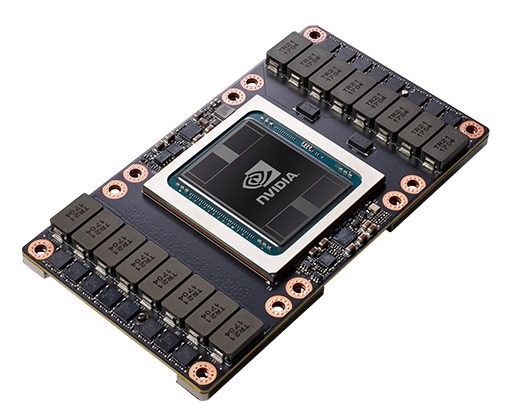Last August, cloud giant Microsoft acquired HPC cloud orchestration pioneer Cycle Computing. Since then the focus has been on integrating Cycle’s organization, mapping out its new role as a core Microsoft Azure product, and deciding what to do with those Cycle customers who currently use non-Azure cloud providers. At SC17, HPCwire caught up with Brett Tanzer, head of Microsoft Azure Specialized Compute Group (ASCG, which used to be Big Compute) in which Cycle now lives, and Tim Carroll, formerly Cycle VP of sales and ecosystem development and now a ‘principal’ in ASCG, for a snapshot of emerging plans for Cycle.
Much has already been accomplished they emphasize – for starters “the Cycle organization has settled in” and most are relocating to Seattle. Much also remains to be done – it will probably be a year or so before Cycle is deeply integrated across Azure’s extensive capabilities. In some ways, it’s best not to think of the Cycle acquisition in isolation but as part of Microsoft’s aggressively evolving strategy to make Azure all things for all users and that includes the HPC community writ large. Cycle is just one of the latest, and a significant, piece of the puzzle.
Founded in 2005 by Jason Stowe, Rachel Christensen, Rob Futrick and Doug Clayton, Cycle Computing was one of the first companies to target HPC orchestration in the cloud; its software, CycleCloud, enables users to burst and manage HPC workloads (and data) into the cloud. Till now, cloud provider agnosticism has been a key Cycle value proposition. That will change but how quickly is uncertain. Tanzer assures there will be no disruption of existing Cycle customers, but also emphasizes Microsoft intends Cycle to become an Azure-only product over time. Cycle’s CEO Jason Stowe has taken on a new role as Principal Group Program Manager responsible for Hybrid and Cluster Workflow products in the Specialized Compute Group. The financial details of the Cycle acquisition weren’t made public.
Far more than in the past HPC is seen as an important opportunity for the big cloud providers. The eruption of demand for running AI and deep learning workflows has also been a major driving force for cloud providers.

Microsoft, like Google and Amazon (and others), has been investing heavily in advanced scale technology. The immediate goal is to attract HPC and AI/deep learning customers. One indicator is the way they have all been loading up on GPUs. Azure is no exception and offers a growing list of GPU instances (M60, K80, P100, P40, and V100 (announced)); it also offers InfiniBand high speed interconnect. In October, Microsoft extended its high performance gambit further via a partnership with Cray to offer supercomputing in the cloud (see HPCwire article, Cray+Azure: Can Cloud Propel Supercomputing?).
How the latter bet will play out is unclear – Tanzer says, “We are hearing from customers there are some workloads they need to get into the cloud that require a Cray. And Cray itself is a pretty innovative company. We think the partnership has longer legs. Look for more to come.” One wonders what interesting offerings may sprout from that alliance.
For now the plan for Cycle is ever deeper integration with Azure’s many offerings, perhaps eventually including Cray. It’s still early days, of course. Tanzer says, “If Tim looks like he hasn’t slept much for past three months, it’s because he hasn’t. Strategically, all of these products – Cycle, Azure Batch, HPC pack (cluster tool) – will work together and drive orchestration across all the key workloads.”
“The company is rallying behind the [HPC] category and customers are responding very well,” says Tanzer. “We are investing in all phases of the maturity curve, so if you are somebody who wants a Cray, we now have an answer for you. If you are rewriting your petrochemical workload and want to make it cloud friendly, then Batch is a great solution. We are really just taking care, wherever we can, to take friction out of using the cloud. We looked at Cycle and its fantastic people and knowledge. The relationship with Cycle is very symbiotic. We look at where our customers are and see [that for many], Cycle helps them bootstrap the process.”
It’s not hard to see why Cycle was an attractive target. Cycle brings extensive understanding of HPC workloads, key customer and ISV relationships, and a robust product. Recently it’s been working to build closer relationships with systems builders (e.g. Dell EMC) and HPC ISVs (e.g. ANSYS). From an operations and support perspective, not much has changed for Cycle customers, says Carroll, although he emphasizes having now gained access to Microsoft’s deep bench of resources. No decision has been made on name changes and Tanzer says, “Cycle is actually a pretty good name.”
 Cycle’s new home, the Azure’s Specialized Compute Group seems to be a new organization encompassing what was previously Big Compute. As of this writing, there was still no Specialized Compute Group web page, but from the tone of Tanzer and Carroll it seemed that things could still be in flux. SCG seems to have a fairly broad mission to smooth the path to cloud computing across all segments with so-called “specialized needs” – that, of course, includes HPC but also crosses over into enterprise computing as well. To a significant extent, says Tanzer, it is part of Microsoft’s company-wide mantra to meet-the-customer-where-she/he-is to minimize disruption.
Cycle’s new home, the Azure’s Specialized Compute Group seems to be a new organization encompassing what was previously Big Compute. As of this writing, there was still no Specialized Compute Group web page, but from the tone of Tanzer and Carroll it seemed that things could still be in flux. SCG seems to have a fairly broad mission to smooth the path to cloud computing across all segments with so-called “specialized needs” – that, of course, includes HPC but also crosses over into enterprise computing as well. To a significant extent, says Tanzer, it is part of Microsoft’s company-wide mantra to meet-the-customer-where-she/he-is to minimize disruption.
“Quite frankly we are finding customers, even in the HPC space, need a lot of help and it’s also an area where Microsoft has a many differentiated offerings,” Tanzer says. “You should expect us to integrate Cycle’s capabilities more natively into Azure. There is much more that can be done in the category to help customers take advantage of the cloud, from providing best practices about how your workloads move, through governance, and more. Cloud consumption is getting more sophisticated and it’s going require tools to help users maximize their efforts even though the usage models will be very different.”
One can imagine many expanded uses for Cycle functionality, not least close integration with an HPC applications and closer collaboration with ISVs to drive adoption. Microsoft has the clout and understanding of both software and infrastructure businesses to help drive that, says Carroll. “Those two things are important because this is a space that’s always struggled to figure out how to build partnerships between the infrastructure providers and software providers; Microsoft’s ability to talk to some of the significant and important ISVs and figure out ways to work with them from a Microsoft perspective is a huge benefit.”
It probably bears repeating that Tanzer’s expectations seem much broader than HPC or Cycle’s role as an enabler. He says rather matter of factly, “Customers are recognizing the cloud is the destination and thinking in more detail about that. It will be interesting to see how that plays out.” When he says customers, one gets the sense he is talking about more than just a narrow slice of the pie.
The conversation over how best to migrate and perform HPC has a long history. Today, there seems less debate about whether it can be done effectively but more around how to do it right, how much it costs, and what types of HPC jobs are best suited for being run in the cloud. Carroll has for some time argued that technology is not the issue for the most potential HPC cloud users.

“It’s less about whether somebody is technically ready than whether they have a business model that requires them to be able to move faster and leverage more compute than they had thought they were going to need,” says Carroll. “Where we see the most growth is [among users] who have deadlines and at the end of the day what they really care about is how long will it take me to get my answer and tell me the cost and complexity to get there. That’s a different conversation than we have had in this particular segment over time.”
Some customer retraining and attitude change will be necessary, says Tanzer.
“They are going to have hybrid environments for a while so to the degree we can help them reduce some of the chaos that comes from that and help retrain the workforce easily on what it needs to take advantage of the cloud. We think that’s important. Workforces who run the workloads really understand all they want to do is to take advantage of the technology but some relearning is necessary and that’s another area where Cycle really helps because of its tools and set of APIs and they speak the language of a developer,” he says.
Cycle connections in the academic space will also be beneficial according to Tanzer. There are both structural and financial obstacles for academicians who wish to run HPC workloads in commercial cloud and Cycle insight will help Azure navigate that landscape to the benefit of Azure and academic users, he suggests. The Cray deal will help in government markets, he says.
Stay tuned.





























































